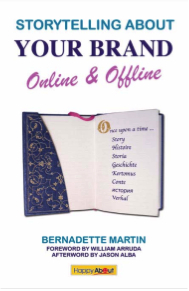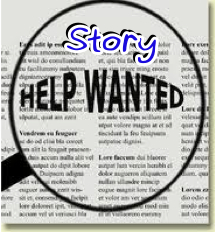I’ve been fascinated for awhile about whether we construct our stories (identities, personas) differently online than we do offline.
Back in the spring at the conference Digital Storytelling ’10, Molly Flatt of the agency 1000Heads looked at “look at how — and if — social media is changing the way we tell our own stories, brands tell their stories, and how the two collide.”
Here are some highlights of her exploration:
I think social media encourages a architectural, multi-media way of storytelling similar to graphic novelists. I find this most powerful when fewer words are used (we’re all fighting for space and attention in the online world, after all), but they are deepened and complexified by their link-rich context.
I’m not a comics geek as Flatt says she is, so I’m not sure I agree with the graphic-novel analogy. I resist the “fewer words” prescription simply because I tend to be verbose, but I agree that in the online world, the fewer words we use, the more likely we will be to get read. I find it really fun to figure out how to edit down to a certain word limit — a 100-word bio, for example, such as the one I have here. Twitter provides the ultimate 140-character discipline. (Here, Flatt went on to talk about augmented reality, but I won’t get into that because I have not educated myself about augmented reality.)
In social media, we’re all the heroes of our own stories, and we’re uploading fragments of our stories all the time.
This fragmentary quality challenges the sensibilities of storytelling purists. Because these fragments generally lack beginnings, middles, and ends, we do not often see them as stories. But taken in the aggregate, do they successfully tell our stories? They certainly become building blocks in constructing our identities.
We constantly and shamelessly use brands to express our identity online — the general has become the specific.
I hadn’t thought before about this aspect, but it’s certainly true in my case. My fierce allegiance to, for example, Apple products, is surely part of my story, and I’m certain I could come up with lots of other brands that I regularly integrate into my online story.
When we don’t have face-to-face instincts to rely on when building trust, only digital words and images, what do we rely on to capture our attention or empathy? Stories.
Stories build trust even when we are face to face, so their power when we aren’t is a given.
Flatt, who uses Isobella Jade as an example of an online storyteller/identity constructor who has integrated all the above themes into her online story, has nicely characterized some aspects of our online stories.
Meanwhile, I learned a new term — IRL (in real life) — in a post by Alexandra Samuel entitled 10 Reasons to Stop Apologizing for Your Online Life. Samuels essentially asserts there is no difference between our online and offline lives:
If we still refer to the offline world as “real life,” it’s only a sign of deep denial — or unwarranted shame — about what reality looks like in the 21st century. The Internet’s impact on our daily lives, experiences and relationships is real. Our world is deeply affected by networks. From the moment you wake up to news that was gathered online to the minute you fall asleep listening to a podcast, the Internet shapes how you experience the world around you.
In giving her 10 reasons to stop apologizing, Samuels hits on several that relate directly to our need to tell stories [my comments in brackets]:
It’s time to start living in 21st century reality: a reality that is both on- and offline.
Acknowledge online life as real, and the Internet’s transformative potential opens up.
When you commit to being your real self online, you discover parts of yourself you never dared to share offline. [Telling your story is one way to be your real self.]
When you take the idea of online presence literally, you can experience your online disembodiment as a journey into your mind rather than out of your body.[Online presence and online story = synonymous?]
When you focus on creating real meaning with your time online, your online footprint makes a deeper impression.[Stories are the best way to create meaning.]
When you spend your online time on what really matters to you, you experience your time online as an authentic reflection of your values. [Stories are an excellent medium for authentically reflecting values.]
I am interested in conducting research — yes, probably of the academic ilk — on more differences in the ways we use stories to construct our online identities versus our offline identities. I haven’t seen much, if any, scholarship on this topic. If you’re aware of research on this theme, I’d love to hear about it.








